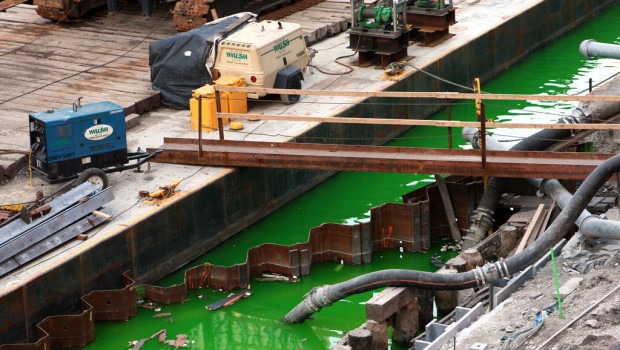Beneath a landfill in St. Louis, Missouri, two things are going on. Separately, they can be handled. If they come together, disaster will ensue. The first: a slow-burning fire that began in 2010. The second: a cache of nuclear waste left over from the Cold War era. The only thing that separates them is about 1,200 feet.
Slow-burning, underground fires which last for years are not uncommon, especially in old, abandoned coal mines. They are often initiated by lightning strikes, forest fires and the illegal burning of waste. In St. Louis, it is unknown what started the fire.
If the smoldering embers ever meet the nuclear waste, a potential “catastrophic event” could happen, sending up a plume of radioactive smoke over a highly populated area near St. Louis’ primary airport.
Officials became aware of the fire at Bridgeton Landfill in 2010, and it unknown how long it was burning before that. They also soon learned of the proximity of the fire to the nuclear waste. It was not until a year ago, however, that authorities came up with a plan for the worst-case scenario. And that plan was not published until this week when a local radio station obtained a copy.
Officials say that the situation “is contained,” and County Executive Steve Stenger emphasized that the plan “is not an indication of any imminent danger.” He also said in a released statement that, “It is county government’s responsibility to protect the health, safety and well-being of all St. Louis County residents.”
The landfill operator, Republic Services, also downplayed the risk of a catastrophe. The company points out that interceptor wells and other safeguards are in place to keep the nuclear waste and the fire separate. Landfill spokesman Russ Knocke said in a statement that, “County officials and emergency managers have an obligation to plan for various scenarios, even very remote ones. The landfill is safe and intensively monitored.”
According to the disaster plan, if the underground fire ever reaches the nuclear waste, “there is a potential for radioactive fallout to be released in the smoke plume and spread throughout the region.”
The plan calls for evacuations of St. Louis County and nearby St. Charles County. The plan also calls for the development of emergency shelters. Depending on the severity of the situation, private and volunteer groups, and possibly the federal government would help to contain the problem.
The nuclear waste has caused the state concern for some time. In 2013, Missouri Attorney General Chris Koster sued Republic Services claiming negligent management and violation of the state’s environmental laws. The case will proceed to trial next spring.
One new report shows that trees near the landfill are contaminated with radiation. Another report indicates that the fire has gotten past two rows of interceptor wells and is therefore inching closer to the nuclear waste.
Koster emphasized that the reports show that Republic Services “does not have this site under control.”
Ed Smith of the Missouri Coalition for the Environment echoes these sentiments and hopes the government gets more involved in the situation “to ensure that businesses, schools, hospitals and individuals know how to respond in a possible disaster at the landfill, just like preparing for an earthquake or tornado.”
Stay Connected